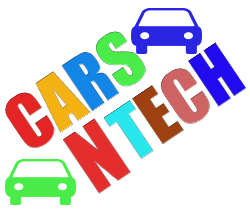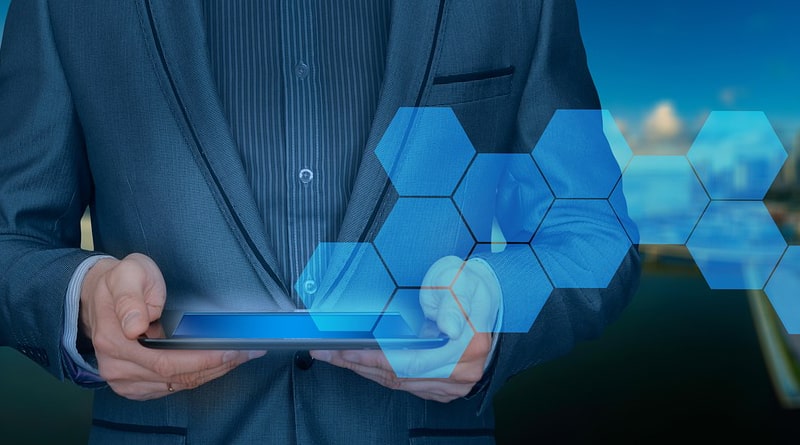Unleashing the Power of IoT: How the Internet of Things is Transforming Our Lives
The Internet of Things (IoT) has emerged as one of the most transformative technologies of the digital age, connecting devices and enabling seamless communication between them. In this article, we will explore the incredible potential of IoT and how it is revolutionizing various aspects of our daily lives.
Introduction
In today’s interconnected world, IoT has become increasingly prevalent, infiltrating numerous industries and transforming the way we live, work, and interact. By connecting physical devices, vehicles, appliances, and even buildings to the internet, IoT enables the exchange of data and empowers intelligent decision-making. Let’s delve deeper into the world of IoT and its real-world applications.
Understanding the Internet of Things (IoT)
At its core, IoT refers to a network of connected devices that communicate and share information with each other through the internet. These devices are embedded with sensors, actuators, and software, enabling them to collect and exchange data autonomously. The data generated by IoT devices can range from temperature and humidity readings to complex analytics used for decision-making.
Applications of IoT in Everyday Life
IoT in Healthcare
The healthcare industry has witnessed a significant transformation with the integration of IoT. From wearable devices that track vital signs and monitor health conditions to remote patient monitoring systems, IoT has revolutionized patient care. Real-time data collection and analysis allow healthcare professionals to provide personalized treatment plans, improve patient outcomes, and even predict health emergencies.
IoT in Smart Homes
Smart homes leverage IoT technology to enhance comfort, convenience, and security. Connected devices such as smart thermostats, lighting systems, and security cameras can be controlled remotely through smartphones or voice assistants. IoT-powered home automation enables energy efficiency, enables personalized settings, and provides homeowners with greater control over their living spaces.
IoT in Transportation and Logistics
IoT is reshaping the transportation and logistics sector by optimizing operations, reducing costs, and improving safety. From smart traffic management systems that alleviate congestion to real-time tracking of shipments and predictive maintenance of vehicles, IoT enables efficient and secure transportation. Furthermore, autonomous vehicles and drones are becoming a reality, transforming the way we commute and deliver goods.
IoT in Agriculture and Farming
The agriculture sector has embraced IoT to increase productivity, conserve resources, and improve crop yields. IoT sensors placed in fields monitor soil moisture, temperature, and nutrient levels, enabling farmers to make data-driven decisions about irrigation and fertilization. Connected machinery and automated farming systems streamline processes, minimize waste, and optimize resource usage.
IoT in Industrial Automation
IoT has revolutionized industrial automation, enabling seamless connectivity and control of machines, production lines, and entire manufacturing processes. With IoT-enabled sensors and monitoring systems, manufacturers can gather real-time data on equipment performance, predictive maintenance needs, and quality control. This data
This data empowers businesses to optimize their operations, increase productivity, and reduce downtime. IoT-driven industrial automation also opens doors for predictive analytics, enabling proactive decision-making and minimizing costly disruptions.
Benefits and Challenges of IoT
The widespread adoption of IoT brings forth numerous benefits, improving efficiency, convenience, and quality of life. IoT devices provide real-time data and insights, enabling informed decision-making and personalized experiences. From smart cities that optimize resource usage to wearable fitness trackers that promote a healthier lifestyle, IoT enhances various aspects of our lives.
However, along with the benefits, IoT also presents challenges that need to be addressed. Security and privacy concerns are critical in an interconnected ecosystem where data is exchanged between devices. Safeguarding personal information and ensuring secure communication channels are essential to prevent unauthorized access and misuse of data. Additionally, the complexity of IoT infrastructure and the need for interoperability pose challenges in terms of standardization and compatibility.
Security and Privacy Concerns
As IoT devices proliferate, ensuring robust security and privacy measures becomes paramount. Vulnerabilities in IoT systems can lead to unauthorized access, data breaches, and even cyberattacks. Manufacturers and users must prioritize security from the design phase, implementing encryption, authentication, and secure protocols to protect sensitive data. Regular software updates and patches should be applied to address emerging threats and vulnerabilities.
Furthermore, user awareness and education about IoT security risks are crucial. Strong passwords, network segmentation, and proper configuration of devices are fundamental steps to mitigate potential risks. Additionally, regulatory frameworks and industry standards play a vital role in establishing guidelines and best practices for IoT security.
Future of IoT
The potential of IoT is vast and continually expanding. As technology advances, we can expect further integration of IoT into our daily lives. Innovations such as edge computing, artificial intelligence, and 5G networks will unlock new possibilities for IoT applications.
In the future, we envision smart cities with interconnected infrastructure, autonomous vehicles seamlessly navigating our roads, and healthcare systems leveraging IoT for personalized, preventive care. IoT will continue to reshape industries, optimize resource usage, and enhance overall efficiency.
Conclusion
The Internet of Things has unleashed a wave of innovation, transforming the way we live, work, and interact with the world around us. Its applications span across healthcare, smart homes, transportation, agriculture, and industrial automation, bringing numerous benefits and opportunities for growth.
However, as we embrace the power of IoT, we must also address security and privacy concerns to build a robust and trustworthy ecosystem. With advancements in technology and a collective effort to overcome challenges, the future of IoT holds tremendous potential to shape a smarter, more connected world.
FAQs
FAQ 1: How does IoT improve healthcare?
IoT enables remote patient monitoring, personalized treatment plans, and real-time health data analysis, leading to improved patient care, better disease management, and early detection of health issues.
FAQ 2: Are there any security risks associated with IoT?
Yes, IoT introduces security risks such as data breaches, unauthorized access, and cyberattacks. Strong security measures, regular updates, and user awareness are crucial to mitigate these risks.
FAQ 3: What industries can benefit from IoT?
Several industries can benefit from IoT, including healthcare, transportation, agriculture, manufacturing, energy, and smart cities. IoT offers optimization, efficiency, and improved decision-making across various sectors.
FAQ 4: How is IoT transforming the agriculture sector?
IoT enables precision farming techniques, real-time monitoring of crops and soil conditions, and automation of farming processes. This leads to increased productivity, resource conservation, and improved crop yields.
FAQ 5: What are the future possibilities of IoT?
The future of IoT holds exciting possibilities, including smart cities, autonomous vehicles, advanced healthcare systems
with personalized care, and seamless integration of IoT into our daily lives. We can expect advancements in areas such as wearables, smart appliances, and connected infrastructure, creating a more efficient and convenient lifestyle.
With IoT, our homes will become smarter and more intuitive, adapting to our preferences and needs. From voice-controlled assistants that manage our tasks to energy-efficient devices that optimize resource usage, IoT will enhance our living spaces and make our lives more comfortable.
In the healthcare sector, IoT will continue to revolutionize patient care. Wearable devices and health monitors will become more sophisticated, providing real-time health data to doctors for accurate diagnoses and personalized treatment plans. Telemedicine will become more prevalent, enabling remote consultations and monitoring of patients from the comfort of their homes.
Transportation will undergo significant transformations with the integration of IoT. Connected vehicles will communicate with each other and with infrastructure, optimizing traffic flow, reducing congestion, and enhancing road safety. Autonomous vehicles will become more prevalent, leading to safer and more efficient transportation systems.
IoT will also have a profound impact on the industrial landscape. Smart factories and manufacturing facilities will leverage IoT to streamline processes, improve productivity, and reduce downtime. Predictive maintenance, enabled by IoT sensors and data analytics, will minimize equipment failures and optimize resource utilization.
As IoT continues to evolve, it is essential to address the challenges that come with it. Ensuring data security and privacy will remain a top priority. Innovations in encryption, blockchain technology, and secure communication protocols will play a crucial role in safeguarding sensitive information.
Moreover, interoperability and standardization will be key to seamless integration and collaboration between different IoT devices and platforms. Industry-wide standards and protocols will facilitate the development of a cohesive IoT ecosystem that promotes compatibility and scalability.
In conclusion, the Internet of Things is transforming our lives in remarkable ways. From healthcare to smart homes, transportation to agriculture, IoT is revolutionizing industries and enhancing our everyday experiences. By connecting devices, collecting data, and enabling intelligent decision-making, IoT empowers us to live more efficiently, securely, and conveniently.
As we embrace the power of IoT, it is important to navigate the challenges it presents. By prioritizing security, privacy, and standardization, we can unlock the full potential of IoT while mitigating risks. The future of IoT is bright, offering endless possibilities to reshape our world and create a truly interconnected and intelligent society.
FAQs
FAQ 1: How does IoT improve healthcare?
IoT enables remote patient monitoring, personalized treatment plans, and real-time health data analysis, leading to improved patient care, better disease management, and early detection of health issues.
FAQ 2: Are there any security risks associated with IoT?
Yes, IoT introduces security risks such as data breaches, unauthorized access, and cyberattacks. Strong security measures, regular updates, and user awareness are crucial to mitigate these risks.
FAQ 3: What industries can benefit from IoT?
Several industries can benefit from IoT, including healthcare, transportation, agriculture, manufacturing, energy, and smart cities. IoT offers optimization, efficiency, and improved decision-making across various sectors.
FAQ 4: How is IoT transforming the agriculture sector?
IoT enables precision farming techniques, real-time monitoring of crops and soil conditions, and automation of farming processes. This leads to increased productivity, resource conservation, and improved crop yields.
FAQ 5: What are the future possibilities of IoT?
The future of IoT holds exciting possibilities, including smart cities, autonomous vehicles, advanced healthcare systems, and seamless integration of IoT into our daily lives. It will continue to enhance efficiency, convenience, and connectivity on a global scale.

